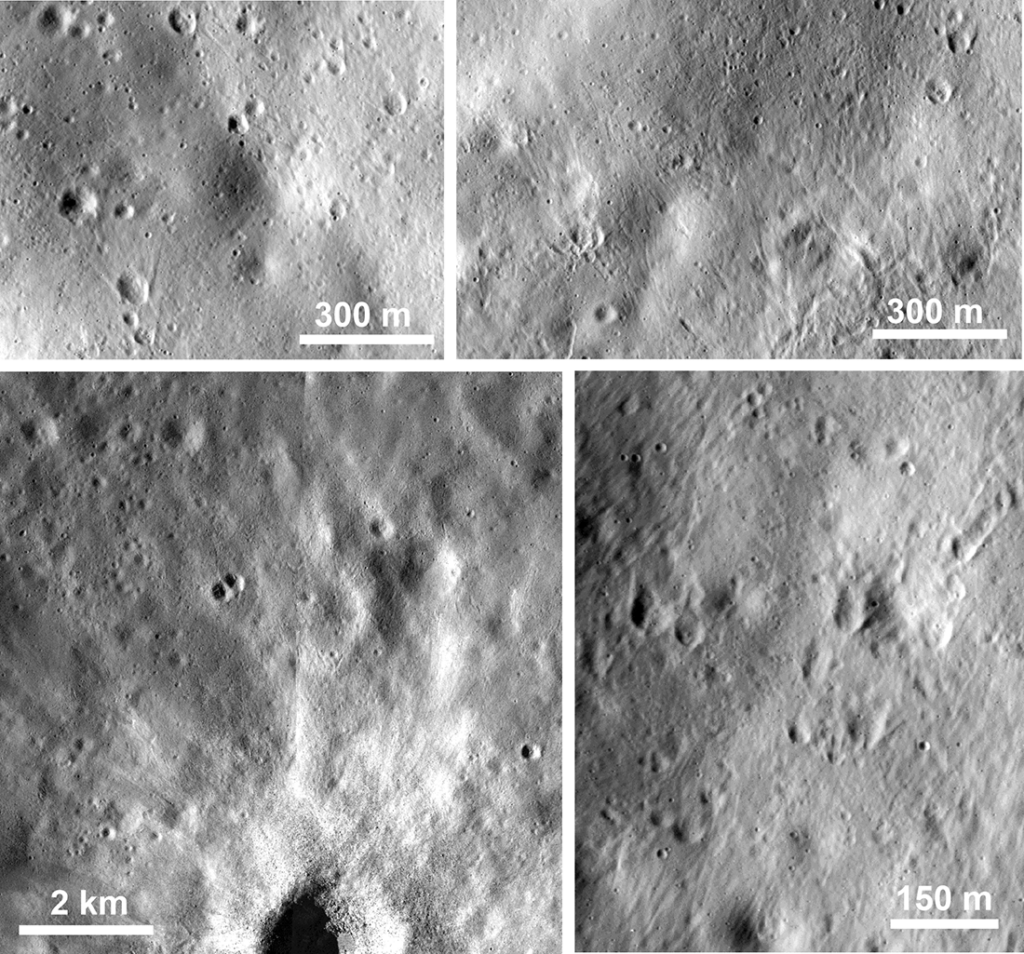The LRO mission support team has published several images showing a scattering of secondary craters on the lunar surface. They were formed during the fall of debris knocked out during the formation of a larger crater.
What are secondary craters?
As you know, the Moon is covered with many craters. They were formed during the bombardment of asteroids and comets that lasted billions of years. But not all lunar craters have the same origin. Almost all large impact formations were formed directly as a result of the fall of celestial bodies. But that part of the small craters are “secondary”. They were left after the fall of debris on the Moon, knocked out as a result of the most powerful impacts.

Secondary craters can be identified by their distinctive features. For example, V-shaped ejecta that indicate the main crater, or asymmetric shapes when the edge located further from the main crater is less well formed than the edge located closer.
Geological Chronicle of Space Impacts
LRO images show a bright primary crater located on the territory of the Mare Orientale (it is located on the western edge of the visible hemisphere of the Moon). Characteristic rays emanate from it (they consist of ejected material), and it is also surrounded by a whole field of secondary craters.

Planetary scientists can use secondary craters as a kind of geological record to estimate the size and speed of fragments ejected during the fall of a celestial body. In the case of the largest secondary crater in the LRO images, it was formed by a thirty-meter fragment. As a result of its fall, a funnel with a diameter of 90 meters remained. And the distance of secondary craters from the primary one allows us to estimate the ejection rate. According to scientists, the secondary craters in the LRO image were formed as a result of falling debris moving at a speed of about 160 m/s.
It should be noted that not all of the matter ejected during the impacts falls on the Moon. Some fragments gain a second cosmic velocity and fly forever into interplanetary space. Some of them then fall to Earth in the form of lunar meteorites.
Recall that LRO recently photographed the lunar terminator.
According to https://www.lroc.asu.edu
Follow us on Twitter to get the most interesting space news in time
https://twitter.com/ust_magazine
